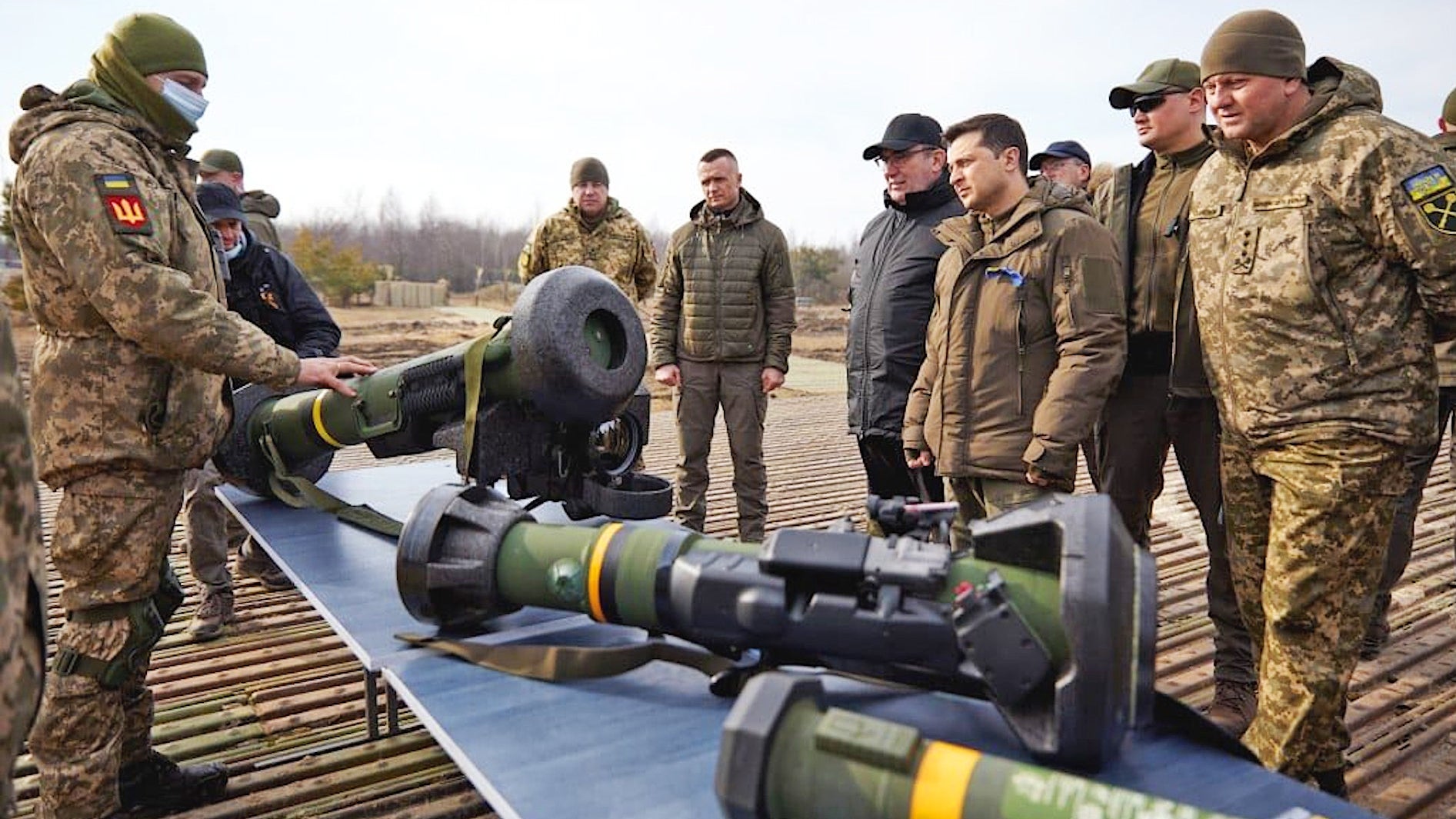Russia’s invasion of Ukraine is only just over a week old, but, by every indication, Ukrainian forces have already been able to inflict significant losses on the invaders in terms of personnel and material. Shoulder-fired surface-to-air missiles, also known as man-portable air defense systems, or MANPADS, have been a key factor in preventing Russian forces from gaining critically important air superiority. Infantry anti-armor weapons, both guided and unguided, have been equally valuable for Ukrainian troops, who are facing a heavily mechanized foe on the ground.
Ukrainian forces are now in the process of receiving a massive influx of additional stocks of MANPADS and infantry anti-armor systems of various types from more than a dozen different countries. Many of the anti-tank weapons can be used against unarmored vehicles, structures, personnel, as well as armor. All told, these new shipments will be added to the thousands of similar weapons already delivered to the embattled country. While some of these weapons, particularly the U.S.-made Javelin guided anti-tank missile and Stinger surface-to-air missile, have practically become household names, many more are much less well known.
With all that in mind, The War Zone has compiled brief profiles of the shoulder-fired missiles, rocket launchers, and recoilless rifles that Ukraine has received in foreign military aid packages so far and the weapons it is expected to receive in the future.
MANPADS
FIM-92 Stinger
America’s Stinger is arguably the most iconic MANPADS ever produced anywhere in the world. The first versions of Stinger entered U.S. military service in 1981 and a number of improved variants have been introduced since then. In recent years, the U.S. Army has begun to field types with even more upgrades that improve the heat-seeking missile’s ability to engage smaller threats with tiny infrared signatures, such as unmanned aircraft.

Stinger is a short-range weapon optimized for point defense, but even early types still had significant engagement envelopes. This means that these missiles can be used to target lower and slower-flying threats, like helicopters, as well as various types of higher-flying and faster-moving fixed-wing aircraft, including combat jets and transport planes that get close enough. The MANPADS envelope is generally 15,000-feet and below, although some can even exceed that ceiling today.
The FIM-92 has additional significance in any conflict involving Russia. U.S.-supplied Stingers were a key factor in the Soviet Union’s ultimate defeat in Afghanistan in the 1980s.

Shipments of these missiles had already been heading to Ukraine before the Kremlin launched its invasion. Five different countries – Germany, Italy, Latvia, Lithuania, and the Netherlands – have now sent or are planning on sending shipments of these portable anti-aircraft weapons. Hundreds of them have reportedly flowed in Ukraine in just the past week or so. At least some of these deliveries have included pedestal-mounted twin-launchers for these missiles, in addition to shoulder-fired ones.
Denmark had planned to send Stingers, but those missiles were past their shelf life and it was ultimately deemed to be impractical to have them refurbished in the United States first.
Grom/Grom-M (Piorun)
Before Russia’s invasion kicked off, Poland had announced plans to send either Grom or Grom-M MAPANDS, the latter of which is also known as Piorun, to Ukraine. It was subsequently reported that these deliveries would most likely include Grom-M/Piorun and that they would be sent first to the United States as part of the transfer process.

The Grom family of missiles, the first versions of which entered service in the 1990s, are improved derivatives of the Soviet-designed 9K38 Igla. Like Stinger, Grom and Piorun are short-range, heat-seeking missiles, but which still have appreciable engagement envelopes that make them very capable weapons against a variety of aerial threats.
The Piorun, which only entered service in 2019 and is seen being tested in the video below, features an improved rocket motor and seeker system. This gives it improved capabilities against maneuvering aircraft and those equipped with various types of more modern infrared countermeasures.

Strela and Igla
There have been reports that Germany is or has at least explored the possibility of sending 2,700 Soviet-era heat-seeking Strela-series MANPADS to Ukraine from stocks that had belonged to the now-defunct East German military. It’s unclear whether the weapons in question are 9K32 Strela-2s or 9K34 Strela-3s, which are also known to NATO as SA-7s and SA-14s respectively.
These are first and second-generation MANPADS that entered service in the 1960s and 1970s and there are reports that they may not even be functional at this point. Matt Schroeder, a Senior Researcher at Small Arms Survey, an independent organization that investigates the supply and use of small arms and light weapons in international conflicts, has raised the possibility various reports may be confusing Strelas with Igla-series types that would be at least somewhat newer.

Regardless, if these weapons are usable, even if they offer more limited capabilities compared to newer Stingers and Piourns, they could still give Ukrainian forces useful additional air defense capacity. In addition, the Ukrainian military has its own stocks of Strelas and Iglas, which it has already been putting to good use. With troops already trained to use these weapons, it would be that much easier to receive and field additional stocks of them.
Guided anti-tank missiles
FGM-148 Javelin
The U.S.-made Javelin, which The War Zone has already covered in detail in the Ukrainian context, practically needs no introduction at this point. These advanced anti-tank missiles, which the U.S. and Estonian governments are continuing to send to Ukraine, are highly capable weapons with an advanced fire control system that enables them to be used effectively day or night. There are reports that Ukrainian forces have achieved a more than 90 percent kill rate when employing these missiles in the conflict so far.
The weapon system, which Ukraine had already begun acquiring stocks of years ago, has top-attack and direct-fire modes of operation, making it very flexible when engaging armored vehicles and other targets, especially in dense urban environments. It has a significant range, with the latest shoulder-fired versions being able to hit targets up to two and a half miles away. The Command Launch Unit’s (CLU) targeting system, which includes thermal imaging sight, also has a secondary surveillance capability that can be used in a pinch. These weapons are even capable of being used against low and slow flying helicopters, especially during their terminal operations in and out of landing zones.

Next-generation Light Anti-tank Weapon (NLAW)
The NLAW, also known as the Main Battle Tank and Light Anti-tank Weapon (MBT LAW), is a simpler-to-operate weapon than the Javelin, requiring no detachable targeting unit, but is still a very capable guided anti-tank missile. Originally developed as a collaborative effort between Swedish and British defense contractors, the U.K. government had sent around 2,000 of these weapons to Ukraine before the conflict broke out. Luxembourg, another NATO member, said last month that it would transfer an additional 100 NLAWs to the Ukrainian armed forces.
Unlike the reloadable Javelin, NLAW is a single-shot, self-contained system. It can be fired in top-attack or direct fire modes out to an effective range of around 2,625 feet, according to the manufacturer Saab. It uses its own onboard guidance to hit the target it was aimed at, acting in a fire-and-forget mode after launch. This is done by the system measuring the angular speed of the target for a number of seconds prior to launch. It is autonomous once it leaves the launcher and its soft launch system allows for the ability to launch from in more confined spaces.
The fact that the system is highly mobile and simpler to employ can be seen as an advantage in some circumstances compared to Javelin. In fact, some could argue that it is the perfect mix of high-tech, capability, and mobility for this conflict, but its range doesn’t come close to the Javelin.

Unguided infantry anti-tank weapons
Carl Gustaf
The Swedish-made Carl Gustaf, which Canada says it plans to send 100 of to Ukraine, is an 84mm recoilless rifle, variants of which have been in service around the world since the 1940s. The system has been continuously improved over that time, especially with regards to weight reduction and improved sighting systems.
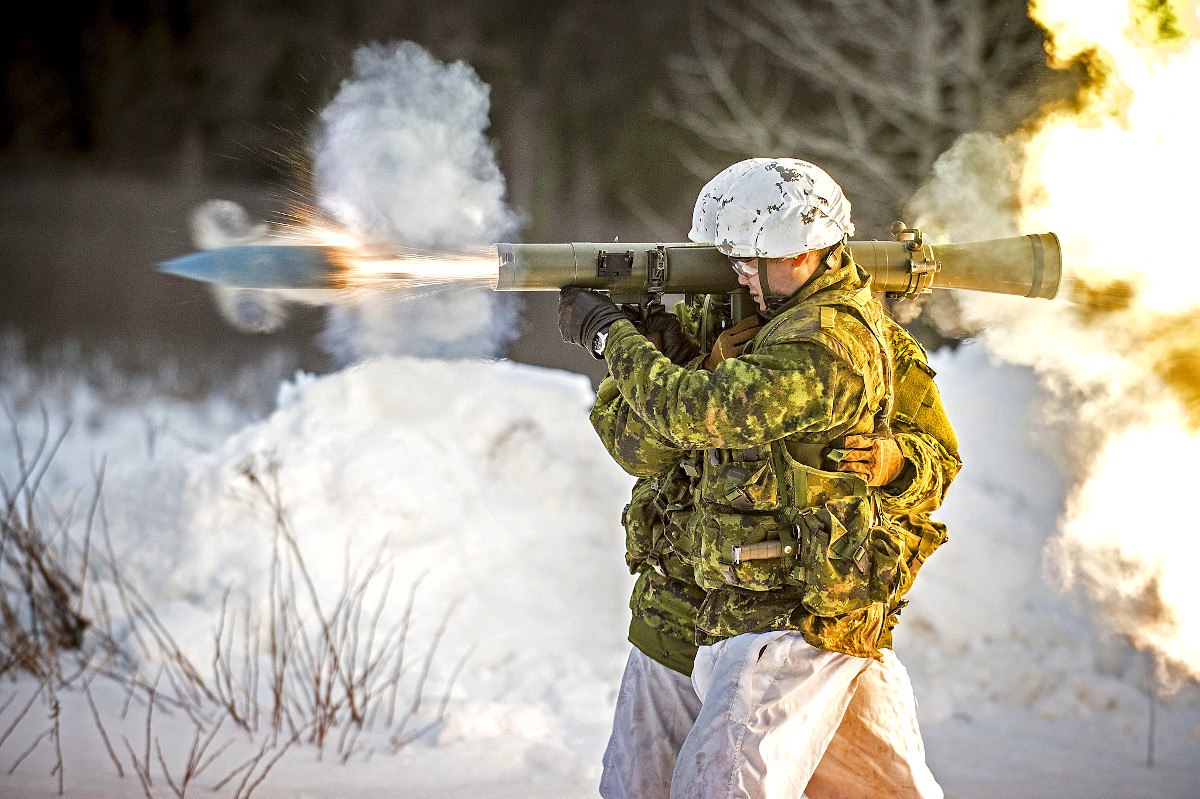
One of the Carl Gustaf’s most important features compared to a lot weapons in this list is that it is a fully reusable system that can fire a wide variety of ammunition types, including dedicated anti-tank and high-explosive rounds. There are also a host of more specialized ammunition types, including one optimized for attacking enemies in structures and behind hard cover. There are is also a thermobaric round, smoking-making and illumination types, and a projectile loaded with 1,100 small metal darts, called flechettes, for engaging troops in the open. There is even work going on now to develop a guided round for this launcher.

Canada says it will send 1,000 rounds of ammunition along with the launchers, but it’s unclear what mix of types that might include.
AT4
It has been reported that the 5,000 anti-armor weapons that Sweden is sending to Ukraine are likely to be AT4s. This Swedish-designed weapon, which the U.S. military was first to adopt in 1987, is in many ways a single-shot, disposable derivative of the Carl Gustaf.
AT4s come preloaded with one of a number of 84mm rounds. As such, there are anti-tank, anti-structure, and high-explosive variants of the AT4 available, as well as a specialized version that can be fired safely from within a confined space, such as a room in a building with a window.
The standard sights on the AT4 are very rudimentary and it has an effective range of just under 985 feet. The launcher can be fitted with an adapter to allow the mounting of more robust sighting systems, including night vision optics, but this is a complicated and potentially costly proposition given that the core weapon is meant to be discarded after use.

Panzerfaust 3
The German-designed Panzerfaust 3 (PzF 3) is categorized as a semi-disposable single-shot rocket launcher. While it can be reloaded like the Carl Gustaf, it is typically issued preloaded with a single guided round – either an anti-tank or an anti-structure “Bunkerfaust” type.
Multiple anti-tank rounds have been developed for this system since it first entered service in 1987, each of which has some type of protruding tip meant to help defeat explosive-reactive armor (ERA). This could be particularly useful for engaging Russian tanks, many of which make heavy use of ERA, in Ukraine. PzF 3’s effective range is between around 1,300 and 1,970 feet, depending on the exact type of ammunition and whether it is equipped with one of the more advanced sighting systems that have been developed for it over the years.

Ukrainian forces may also end up making good use of the reusability of the launcher simply based on what certain countries plan to provide. The Netherlands has said it is sending 50 PzF 3 launchers, along with 400 rounds of ammunition. The 1,000 anti-tank weapons that Germany is planning to deliver will most likely be PzF 3s, too, but it’s unclear whether the stated figure reflects launchers or ammunition, or both. Janes
has reported that Italy’s expected shipment of unspecified anti-tank weapons might also consist of PzF 3s.
M141 Bunker Defeat Munition (BDM)
The M141 BDM, also known as the Shoulder-Launched Multipurpose Assault Weapon-Disposable (SMAW-D), is a relatively obscure weapon that had seen almost exclusive service with the U.S. military until deliveries began arriving in Ukraine earlier this year. The War Zone has already profiled this weapon specifically, as you read more about here.
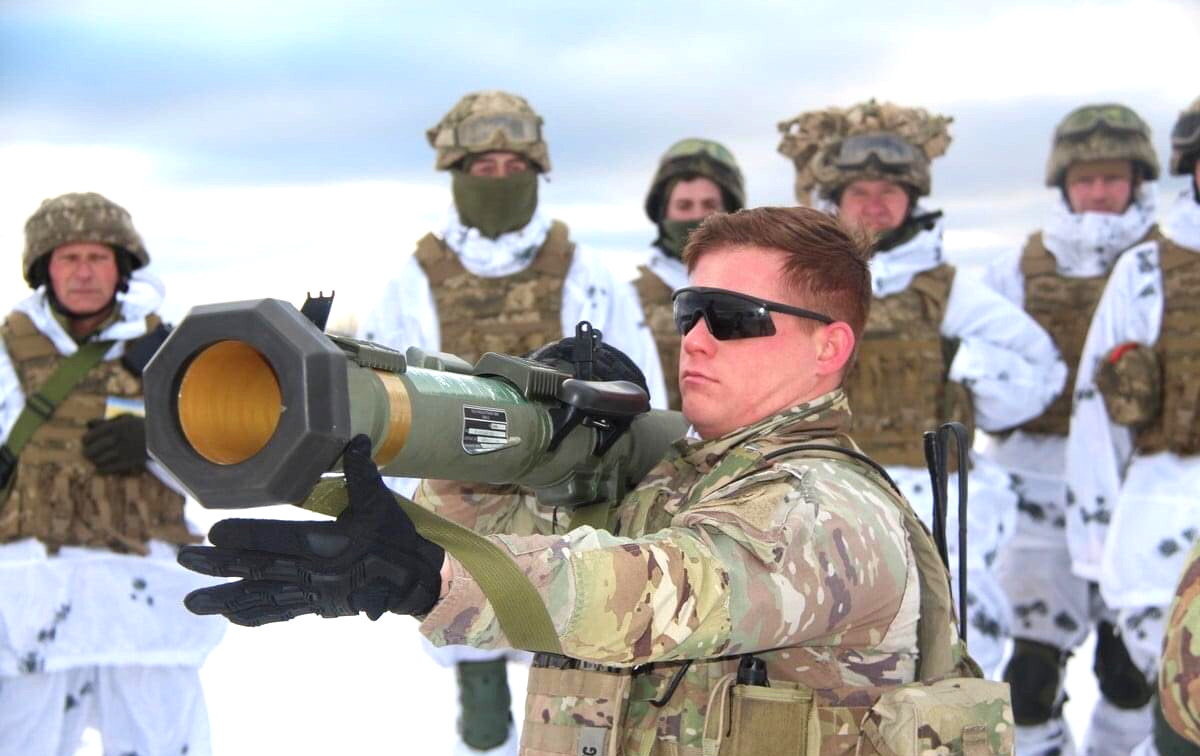
Despite its obtuse name is a multi-purpose single-shot weapon that can be employed against light armored vehicles, as well as bunkers and other targets. As with many launchers in this general category, it has very simplistic sights to go with its effective range of up to 820 feet.
M72 Light Anti-Armor Weapon (LAW)
The first versions of the M72 LAW, which is a single-shot disposable rocket launcher, were developed in the United States in the late 1950s and early 1960s. Well before the end of the Cold War, it had become clear they had limited effectiveness against even contemporary tanks and had started to be gradually withdrawn from service with the U.S. military and other armed forces around the world.
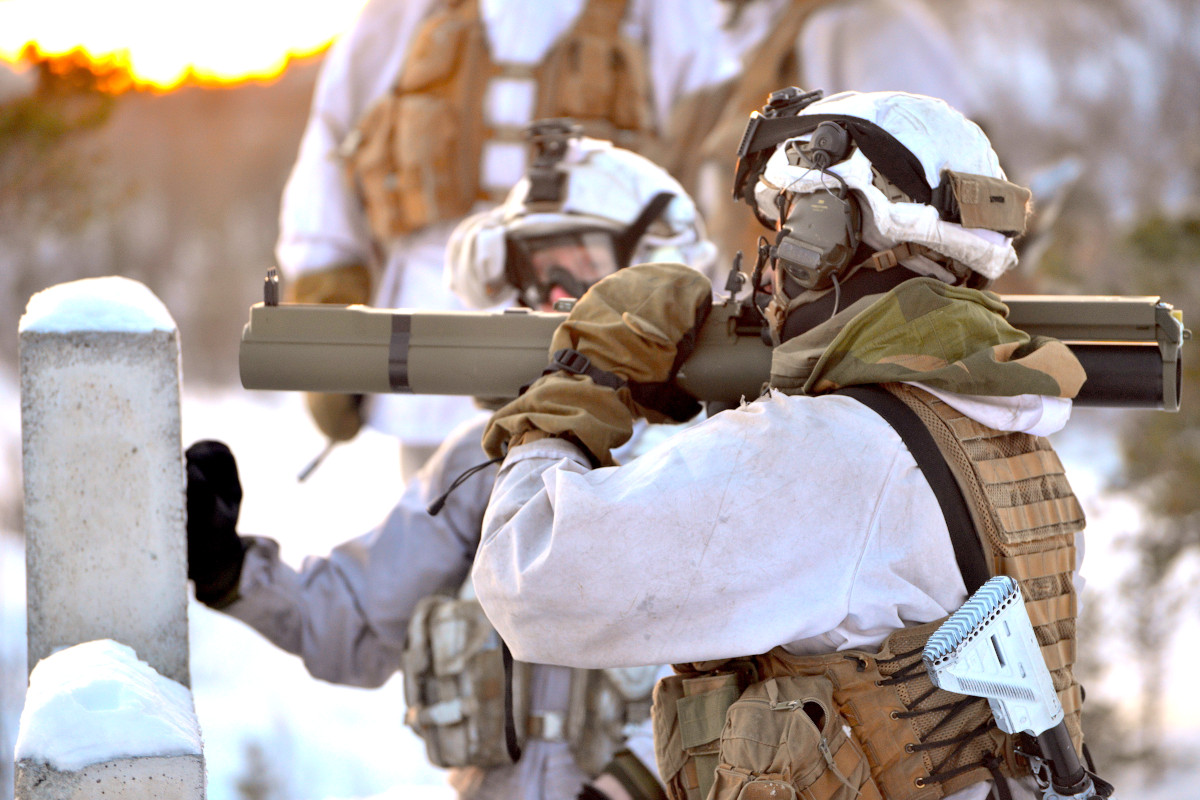
However, the M72 family has seen something of a renaissance over the past two decades with the introduction of more modern variants with more advanced rockets, which you can read more about here. This includes types with improved capabilities against light and unarmored vehicles and structures, as well as general high-explosive and airburst types. Versions that can be safely fired from inside buildings and other confined spaces have also been developed. The core launcher has been improved, as well, including the addition of an accessory rail for the rapid addition of more robust sights. The effective range of the weapon depends on the type of rocket and the sights, but is generally around 720 feet for more recent models.

It’s not clear what variants Ukraine may now be in line to receive. Canada and Norway have said they are sending M72s, but have not specified what versions. Reports indicate that shipments of anti-armor weapons from Denmark and Finland might include different models of M72, possibly very modern Enhanced Capability (EC) types in the case of the Danish aid package.
The compact size, lightweight, and low cost of these weapons make them well suited for anything but the most heavily armored vehicles.
Armor-Piercing Infantry Light Arm System (APILAS)
There have been reports that Finland’s shipments of anti-armor weapons to Ukraine could include the French-made APILAS. This is a single-shot disposable weapon that is only available preloaded with a 112mm high-explosive anti-tank rocket. It has a maximum effective range of just over 1,640 feet against static targets and just under 985 feet against moving ones.

The APILAS is understood to be pretty punishing on the user to fire in terms of both the shock of firing and the noise produced when the rocket is launched. At least in the past, the French military has categorized it as a “traumatic weapon” and prohibited personnel from firing more than two or three of them in peacetime across their entire service careers.
Alcotán-100
Spain has said it will send a total of 1,370 anti-tank launchers to Ukraine, which reports have indicated might include examples of the country’s Alcotán-100. Introduced in 1998, this is another single-shot, disposable rocket launcher.
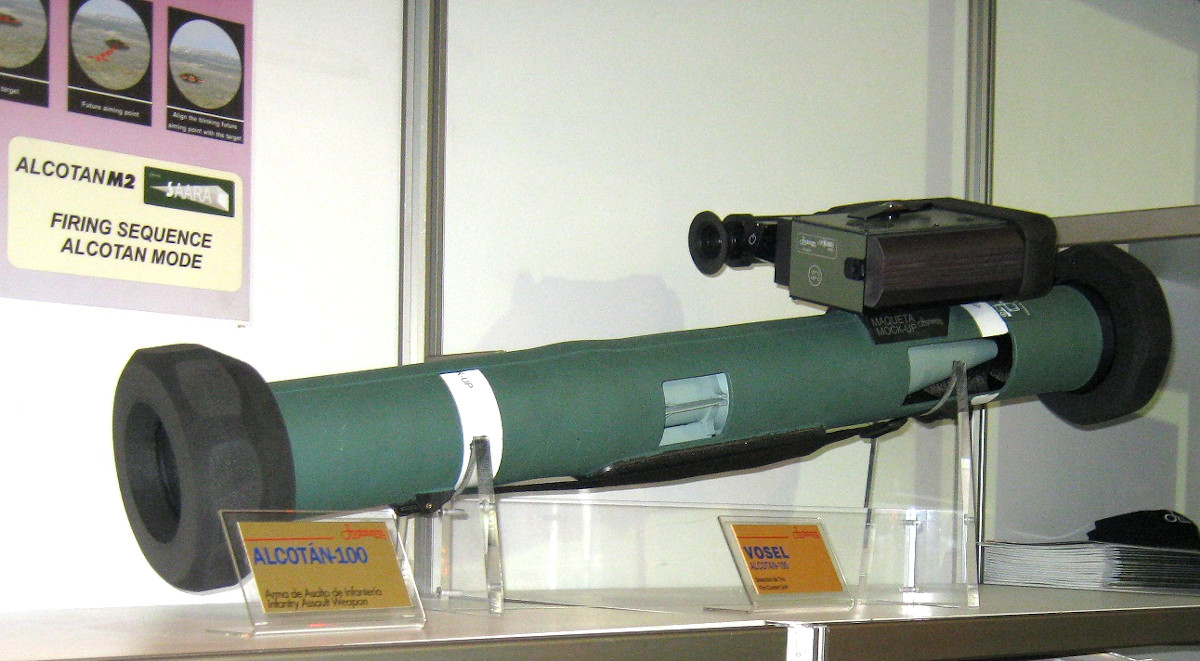
There are versions of the Alcotán-100 preloaded with high-explosive anti-tank rockets, as well as general high-explosive and high-explosive dual-purpose types, the latter of which is meant to provide a mixture of anti-armor and anti-personnel effects. All three types have a maximum effective range of around 2,000 feet against a static point target.
Interestingly, despite being a single-use system, the latest versions of this weapon are equipped with a computerized sighting system with day and night vision modes that can be used by itself for surveillance and reconnaissance purposes.
C90
Spanish aid to Ukraine could include the older C90, which entered service in 1990 and that continues to see use in the Spanish military even as the Alcotán-100 has been adopted. The C90 is a single-shot rocket-propelled grenade launcher that is available loaded with high-explosive anti-tank and anti-structure rounds, as well as one filled with a red phosphorus smoke mixture that has a secondary incendiary effect. All of the versions have effective firing ranges of around 1,150 feet.
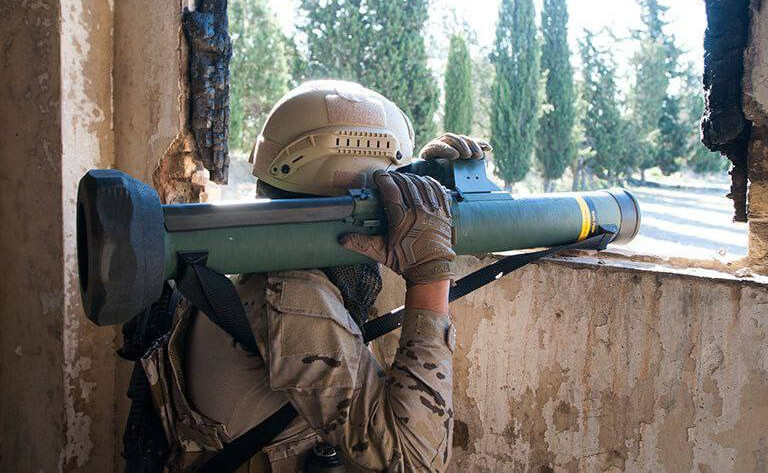
This list may well be incomplete. The Greek, Polish, and Slovakian governments have, among other things, sent or are planning to send anti-tank rocket launchers, but it remains unclear what those weapons might be in either case. French Minister of the Armed Forces, Florence Parly, has said her country will deliver unspecified “missiles,” which could be anti-aircraft or anti-tank types. A number of NATO members, including Poland and Slovakia, still have stocks of Soviet-era weapons that Ukrainian forces might already use, which could make it easier to transfer them and to get them issued out to combat units.
At the same time, many of these systems, especially the single-shot disposable types, share many general similarities in terms of design and capability. Perhaps most important, the unguided anti-armor weapons are all relatively simple designs that do not require operators to go through extensive specialized training beforehand, unlike Javelin or Stinger for instance. A senior U.S. defense official told reporters yesterday that American authorities are working specifically to make sure that military aid going to Ukraine includes systems that the country’s forces are already trained on.
Ease of use means that many of the weapons, especially guided systems, can be fielded faster and on a wider basis. That latter point is very important, regardless of the system in question, since more units having more of these weapons, even ones with short effective ranges, simply increases their capacity to engage enemy targets in the air and ground as they come across them.
“They are able to distribute the equipment very quickly… [and] they are able to make use of it,” a senior U.S. defense said yesterday of U.S. military assistance, in general.
All told, in the coming days and weeks, the Ukrainian military’s arsenal of shoulder-fired anti-aircraft and anti-armor weapons looks set to swell both in terms of size and diversity of systems. Having these weapons in significant quantities is very likely to be a key factor for Ukrainian units holding the line against invading Russian forces.
Contact the author: joe@thedrive.com
